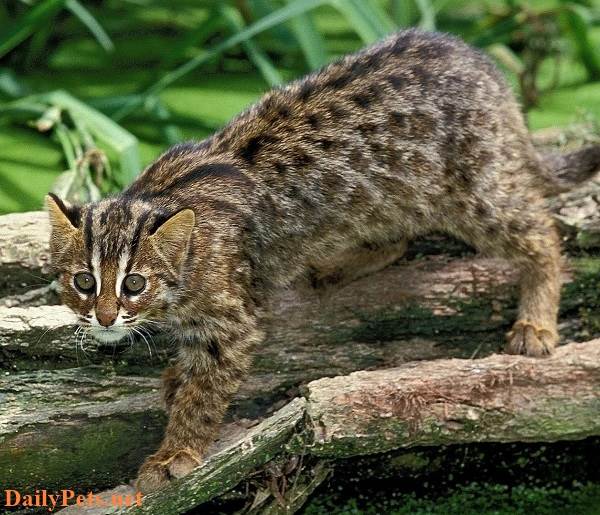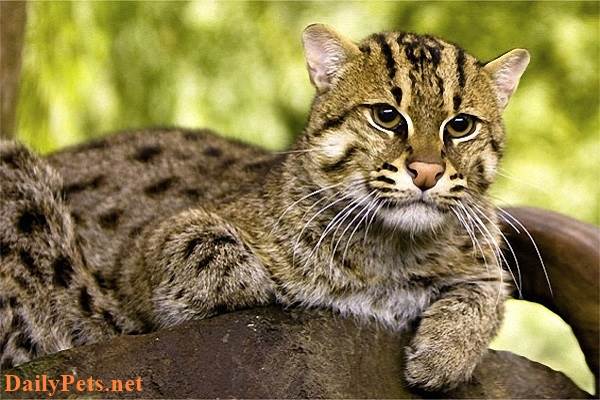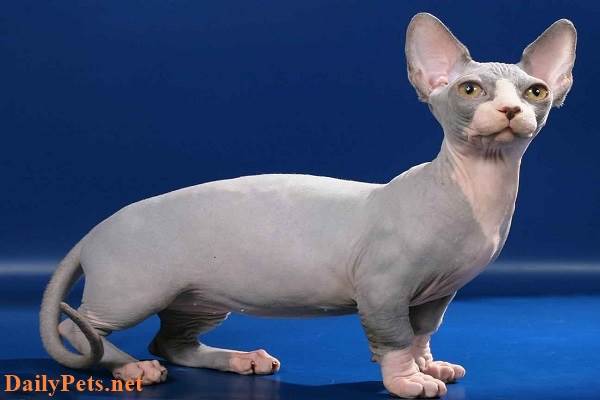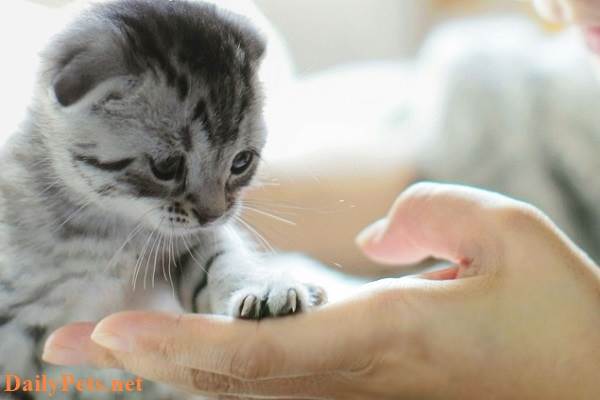It is known for its striking appearance, which resembles that of a leopard, although it is much smaller.
Leopard cat origin
The Leopard cat (The scientific name is Prionailurus bengalensis) is a small wild feline native to mainland South, Southeast, and East Asia. Different subspecies of the Leopard cat exhibit significant variations in fur color, tail length, skull structure, and the size of their carnassials. Archaeological findings suggest that the Leopard cat was the first cat species to be domesticated in Neolithic China approximately 5,000 years ago, specifically in the provinces of Shaanxi and Henan.
Appearance characteristics of Leopard cat
Leopard cats are roughly the size of a large domestic cat. They have small heads, round eyes, and short muzzles. Their fur is typically tawny with a white belly, adorned with rosettes across their body and tail, often featuring ringed patterns at the tail’s tip. These cats display four stripes on their foreheads that extend down to their necks. The length and color of their coats can vary among populations, influenced by their habitat and environmental conditions. For instance, cats in northern regions tend to be heavier with paler and longer fur. In contrast, those inhabiting snowy environments have lighter coats, while cats in densely forested areas sport dark-tawny fur.

Leopard Cat.
Leopard Cats are relatively small, with adults typically weighing between 2 to 7 kilograms (4.4 to 15.4 pounds). They have a body length of about 45 to 65 centimeters (18 to 26 inches) and a tail length of about 20 to 40 centimeters (8 to 16 inches).
Distribution
Leopard cats prefer habitats such as shrublands, grasslands, coniferous forests, as well as tropical and temperate forests. Their natural range covers a vast area, extending from the Amur region in the Russian Far East southwards to China, southeast to the Korean Peninsula, and southwest to Indochina, including the Philippines and the Sunda islands of Indonesia. They also reach westwards to the Indian Subcontinent and northern Pakistan.
Habits and Lifestyle
Leopard cats are solitary creatures that primarily hunt at night, traversing their territory in search of prey. They typically rest in trees during the daytime. They use scent markings and scratch trees within their home range to mark their territory. The size of their territory can vary based on factors such as habitat availability and resource competition.
These cats have keen eyesight and a well-developed sense of smell and hearing, which aids in their successful hunting. Additionally, they are skilled climbers and swimmers. While generally quiet, they may occasionally purr or cry, much like domestic cats.
Diet and Nutrition
Leopard cats are primarily carnivorous, feeding on small terrestrial vertebrates. Their diet includes insects, insectivores, birds, snakes, eels, fish, crabs, hares, mustelids, pigs, small ungulates, and reptiles like lizards. They may also consume carrion on occasion.
Mating Habits
Leopard cats have a polygynous mating system, with a male’s home range sometimes overlapping with those of multiple females. Mating patterns vary, with those in Southeast Asia mating year-round and those in more northern latitudes breeding from January to March. The gestation period lasts 65-70 days, and females typically give birth to 1-4 kittens, with an average litter size of 2-3. Newborn kittens have closed eyes, which open within 10 days. Females usually care for the young, sometimes with assistance from the male. The kittens become fully independent at 8 months old and reach reproductive maturity at around 18 months.
Population
Leopard cats face threats from habitat loss and fragmentation throughout their natural range. They are often considered poultry pests, hunted for meat and skin, and captured for the pet trade.

Population Numbers
The IUCN Red List or other sources do not provide the total population size of Leopard cats. However, estimated populations include around 1,600 individuals in Russia, fewer than 2,500 in Nepal, 100-150 in Pakistan, approximately 50 in Singapore, and about 230,000 in China. Currently, the species is classified as Least Concern (LC) on the IUCN Red List, and their numbers are stable.
Ecological Niche
As predators, Leopard cats play a significant role in controlling rodent populations. Their diet also benefits humans by reducing small vertebrate pests in rural and agricultural areas, contributing to disease control in their habitats.
Domestication
Archaeological and morphometric studies indicate that the domestication of the Leopard cat commenced at least 5,000 years ago during China’s Neolithic period. Consequently, the Leopard cat holds the distinction of being the very first domesticated cat species. However, these early domesticated cats were later supplanted by cats originating from the African wildcat found in the Middle East. Starting in the 1960s, Leopard cats have been intentionally bred with domestic cats, creating a hybrid species known as the “Bengal cat,” which can be kept as a pet without requiring a license.
Fun Facts for Kids
- Within its range, the Leopard cat is the most commonly encountered small cat species.
- Leopard cats are exceptional swimmers, and this ability has enabled them to colonize offshore islands across their distribution area.
- These animals have been interbred with domestic cats, giving rise to the Bengal cat, a globally popular house pet.
- Male Leopard cats are known as “toms,” females are referred to as “queens,” and their offspring are called “kittens.”
- The toes of the Leopard cat possess a slight webbing, which aids them in swimming and provides traction on slippery terrain.
- Leopard cats typically seek refuge for sleep in hollow trees or caves.





